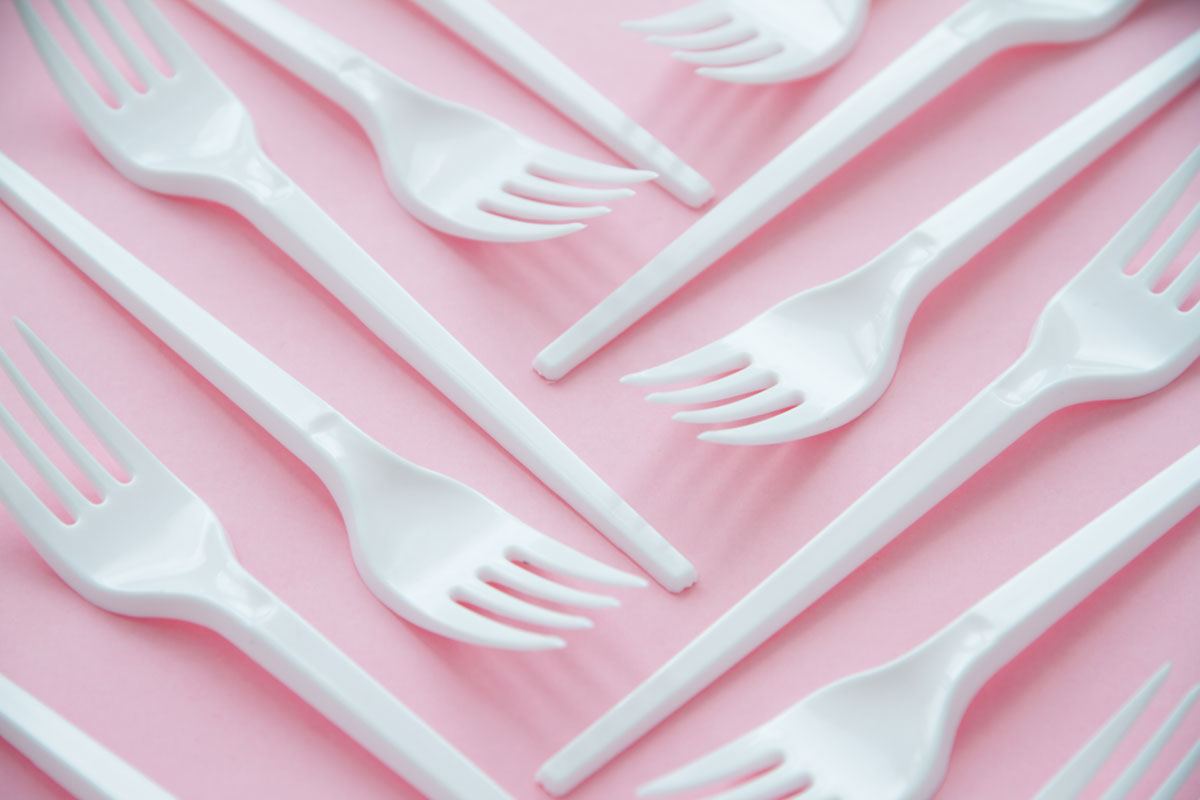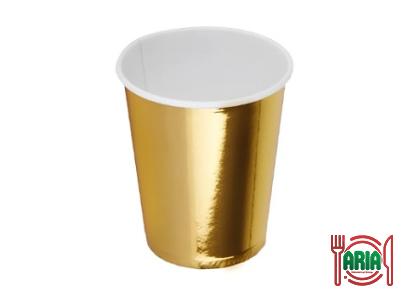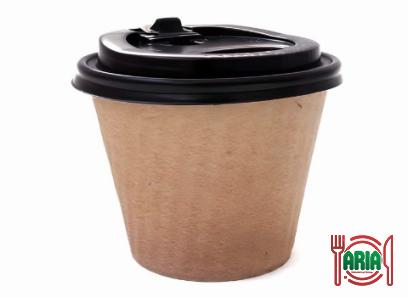In the range of cutlery materials, we want to talk about plastic vs eco friendly. Bagasse, bamboo, recycled paper, cornstarch, and even fallen leaves are some of the materials that are used to manufacture biodegradable plates and compostable disposables.
The variety of biodegradable plates offered by ECO Gardener is crafted from plantation lumber that has not been processed in any way and is completely sustainable and kind to the environment.
These items are safe for use around children of all ages because they have not been subjected to any kind of chemical processing. Plastic food packaging accounts for the vast majority of waste that is eventually disposed of in landfills and seas.
It’s possible that switching to biodegradable items may cut down on the amount of waste that gets dumped in landfills and washed up in oceans throughout the world.

Unfortunately, makers of food and plastic packaging are uncovering an increasing number of justifications for the use of plastic in food packaging. Plastic is a material that sees widespread application due to its low cost and ease of availability.
Although it is more convenient to utilize disposable containers, one cannot disregard the detrimental effects that they have on the environment.
It is also important to keep in mind that items produced from single-use plastic are not constructed from renewable resources.
Because it will take a very, very long time for plastic materials to disintegrate, the use of these items will simply contribute to the rising problem we have with rubbish.
Plates made of biodegradable material and disposable items made of compostable materials are just as easy to use as things made of single-use plastic, but they don’t have the same damaging effect on the environment.
These goods do not contribute to the depletion of the natural resources of the world. Because they disintegrate into their parts after being disposed of, biodegradable plates and compostable disposables will not do any damage to the natural environment.
When you invite people over to your house or if you have a party, you’ll likely go through a lot of dishes and silverware. Use paper plates and cutlery made of wood rather than plastic plates, plastic spoons and forks, and other plastic utensils.
These items are more beneficial to the environment without sacrificing any of the practicality of conventional plastic plates and silverware.
Plates and silverware created from biodegradable materials are better for the environment than those made from nonbiodegradable materials since biodegradable products do not leave behind any poisonous chemicals or residues.
In addition, over time, these items will decay, which will result in the return of earth-friendly nutrients to the soil.

Plates made of biodegradable material and cutlery made of wood could indeed cost a little bit more than those made of single-use plastic, but the price gap isn’t that great. It’s a tiny thing to pay to ensure that your celebration won’t hurt the environment.
They contribute to the reduction of trash produced by plastic and are entirely biodegradable. The typical components of plastic cutlery are polypropylene and polystyrene2, both of which have a photodegradation time of more than 400 years.
Even manufacturing just one pound of plastic cutlery may use up to 78 liters of water and emit a significant amount of greenhouse gases.
On the other hand, edible utensils are constructed of components that are appropriate for human consumption.
As an illustration, the edible cutlery produced by our firm simply has three components: rice, wheat, and sorghum (an ancient grain from Africa).
When our business manufactures sorghum, the production of one pound of sorghum requires just 4.35 liters of water and results in the emission of 0.19 lbs of carbon dioxide.
They are designed to resemble utensils such as forks, spoons, and chopsticks. They have a shelf life of up to 18 months, and if you haven’t finished eating it by the day it expires, you can just pour water on it or compost it, and it will be gone in three days.
Plain, sweet, and savory are the three flavors that are available to choose from. However, the flavor of your cuisine will not be overpowered by them! They are rich in calcium, iron, and protein in addition to dietary fiber.
Additionally, sorghum has a naturally high content of micronutrients. And, if you have celiac disease, they may be prepared without any trace of gluten at all.

And if you feel like you might need some more energy, each utensil has around 34.86 calories. Your soup would benefit greatly from the addition of edible spoons.
They will not, in contrast to traditional crackers or croutons, get mushy while you are eating your soup. Bring your utensils that may be reused, which is another excellent choice among the alternatives.
Perhaps the next time you pack your lunch, you might include an additional set of chopsticks, a fork, a knife, and a spoon.
The simple fact is that compostable utensils are one of the few compostable food packaging items where costs have not come down significantly, relative to available plastic options. A case of compostable cutlery can cost three or even four times as much as a case of plastic cutlery.
This can be challenging to swallow, particularly for small company owners of restaurants & cafés that run on extremely narrow margins.
The problem is that the price of plastic cutlery does not adequately reflect the whole cost to the environment of its production.
It does not take into consideration the amount of land that must be utilized for landfills and the amount of additional energy that must be used in its production, and it most certainly does not take into account the BP oil spills that occur throughout the world.
Plastic cutlery makes life easier for businesses, which, instead of having to wash a large number of metal forks, spoons, and knives, can simply request that customers throw away their cutlery once they have finished eating.
This eliminates the need for businesses to invest in expensive dishwashing equipment. It also makes life easy on consumers who are holding events or parties with a huge volume of people. Simply chuck the utensils in the garbage, and there will be no need to clean up.
Having said that, I have significant concerns regarding this aspect. Dishwashers, which are common in both private homes and commercial establishments, make the task of cleaning very fast and effective.

For Consumers, I’d Like To Recommend The Following: Use reusable metal cutlery while you’re eating at home with your family. If you’re planning a huge event and must use disposables, please use biodegradable cutlery.
When a company offers you plastic cutlery (for example, when you’re picking up some food to go), you should question yourself if you truly need it before accepting it. Over the past few years, I’ve started turning down almost all plastic cutlery that I’m offered.
It is the only way that we are going to educate businesses that they do not need to hand out plastic cutlery in every to-go bag. At first, it is a bit awkward with cashiers, but you get used to it, and it is the only way that we are going to educate businesses.
The following are some suggestions that I would like to make to proprietors of businesses and restaurants: Customers who are dining in should please use the cutlery that can be reused and is made of metal.
Plastic simply does not have a pleasant taste, and you’ll find that the vast majority of your customers would much prefer to eat with metal cutlery rather than plastic (I know I do).
The better dining experience should be well worth the cleaning, and in the end, you’ll wind up saving money since you’ll just be spending a little water and soap to wash your cutlery… as opposed to paying for a new fork for each customer.

For customers that are getting their food delivered – they’re at home! In what kind of home would there not be a drawer full of metal cutlery? These individuals have no requirement for disposables.
For customers that are taking their food to go, please ask them if they need disposable cutlery before simply putting it in there to go bag.
Many of your clients are going home or back to work, places where they have access to reusable silverware, and they will simply throw away the plastic cutlery you gave them (I’m sure you’ve seen this happen just as frequently as I have).
Save the cutlery and the money and ask the question first.
And finally, if you do have to hand out disposable cutlery, consider using cutlery that can be composted. Be in touch with our team to help you with purchases.




